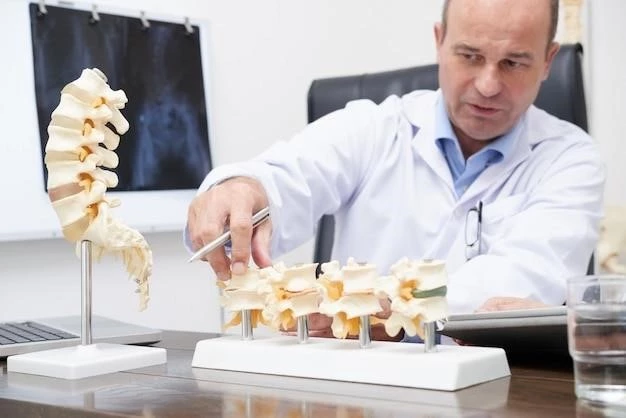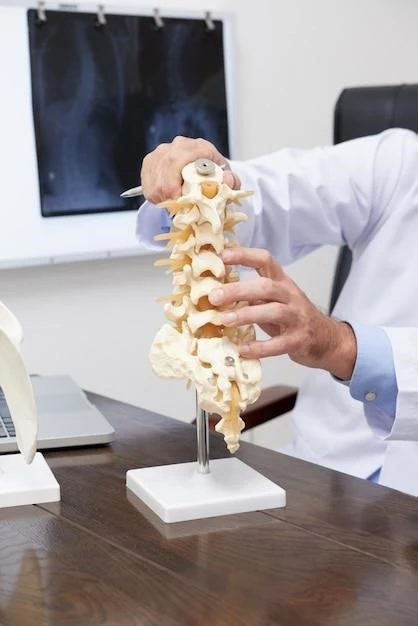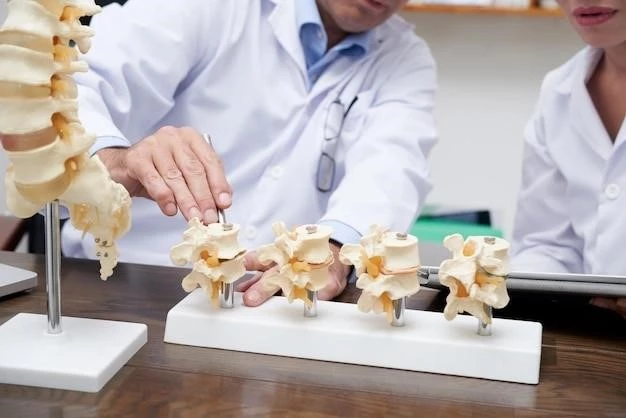Introduction
Congenital scoliosis with unilateral unsegmented bar remains a surgical challenge‚ requiring careful consideration of treatment approaches to prevent adverse outcomes.
Overview of Scoliosis with Unilateral Unsegmented Bar
Congenital scoliosis with a unilateral unsegmented bar is a complex condition that can lead to severe deformities and necessitate surgical intervention‚ with varying degrees of prognosis depending on the specific characteristics of the spinal malformation.
Children diagnosed with congenital scoliosis involving a unilateral unsegmented bar adjacent to hemivertebrae are at risk of curve progression without timely treatment. The severity of deformity can be graded based on the presence of a unilateral unsegmented bar combined with other vertebral anomalies‚ influencing the prognosis and treatment considerations. Surgical challenges arise when addressing the deformity‚ requiring careful planning to avoid complications and ensure optimal outcomes for the patients.
Understanding the nuances of congenital scoliosis with a unilateral unsegmented bar is crucial for healthcare professionals to develop effective treatment plans and provide appropriate care tailored to each patient’s specific condition and prognosis.
Children diagnosed with congenital scoliosis with a unilateral unsegmented bar face challenges that require specialized treatment approaches and long-term follow-up to manage the deformity effectively.
Causes and Development of Congenital Scoliosis
Congenital scoliosis with a unilateral unsegmented bar is often a result of abnormal vertebral development in the womb‚ leading to spinal curvature and structural deformities. The progression of the condition and severity depend on various factors such as the presence of hemivertebrae and fused ribs. Early diagnosis and appropriate treatment are crucial to managing the developmental challenges associated with this complex spinal condition.

Congenital Scoliosis⁚ Understanding the Condition
Children diagnosed with congenital scoliosis with a unilateral unsegmented bar face unique challenges that require specialized treatment approaches to address the spinal deformity effectively.
Challenges in Treating Scoliosis with Unilateral Unsegmented Bar
Treating congenital scoliosis with a unilateral unsegmented bar poses challenges due to the complexity of spinal deformities‚ the risk of curve progression‚ and the need for specialized surgical interventions to correct the malformation and prevent potential complications in pediatric patients.

Surgical Challenges and Treatment Approaches
Surgical intervention for congenital scoliosis with a unilateral unsegmented bar requires careful planning to address spinal deformities adequately and minimize the risk of complications.
Assessment of Deformity Severity and Prognosis
The severity grading of congenital scoliosis with a unilateral unsegmented bar involves evaluating various combinations of vertebral anomalies to determine the prognosis and optimal treatment approach for each individual case‚ with consideration given to factors such as structural deformities‚ growth potential‚ and risk of progression.
Long-term Follow-up and Case Studies
Long-term follow-up of patients with congenital scoliosis and unilateral unsegmented bar provides valuable insights into treatment outcomes and the impact on patients’ lives.
Prognosis and Severity Grading
The severity grading of congenital scoliosis with a unilateral unsegmented bar involves evaluating various combinations of vertebral anomalies to determine the prognosis and optimal treatment approach for each individual case‚ with consideration given to factors such as structural deformities‚ growth potential‚ and risk of progression.
Current Research and Treatment Advances
Studies document the long-term follow-up of patients with congenital scoliosis and unilateral unsegmented bars‚ shedding light on treatment outcomes and postoperative results.
Recent Advancements in Surgical Techniques and Approaches
Research highlights the significance of addressing congenital scoliosis with a unilateral unsegmented bar through advanced surgical techniques to achieve optimal outcomes and minimize the risk of long-term complications.
Preventive Measures and Postoperative Care
Long-term follow-up and documentation of patient cases with congenital scoliosis and unilateral unsegmented bar are essential for evaluating treatment outcomes and optimizing postoperative care plans.
Importance of Postoperative Care and Preventive Measures
Postoperative care and preventive measures are crucial after surgical interventions for congenital scoliosis with a unilateral unsegmented bar to ensure optimal recovery and prevent potential complications‚ emphasizing the need for long-term monitoring and personalized follow-up plans.
Long-term follow-up studies and case reports provide valuable insights into the management and outcomes of congenital scoliosis with unilateral unsegmented bar‚ emphasizing the importance of personalized care and treatment strategies.
Summary of Congenital Scoliosis with Unilateral Unsegmented Bar
Congenital scoliosis with a unilateral unsegmented bar presents complex challenges‚ requiring specialized surgical interventions and long-term follow-up to ensure optimal outcomes and quality of life for patients.
